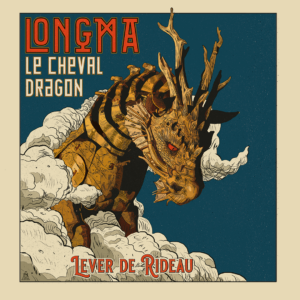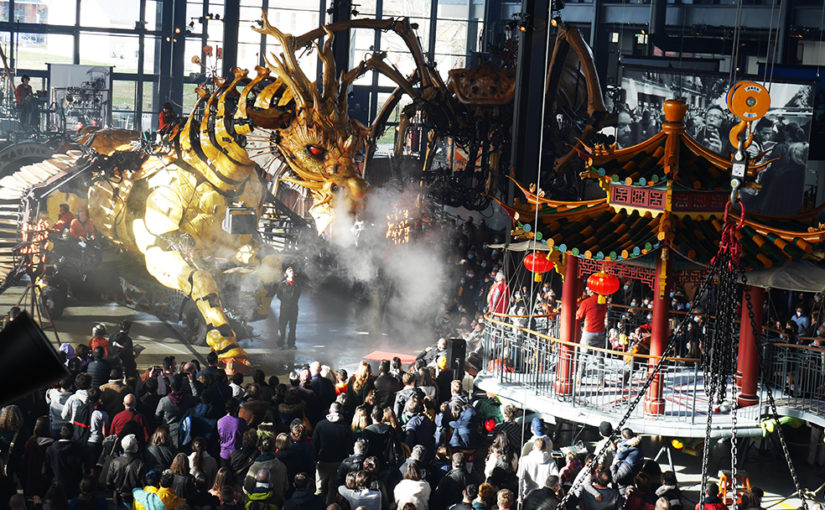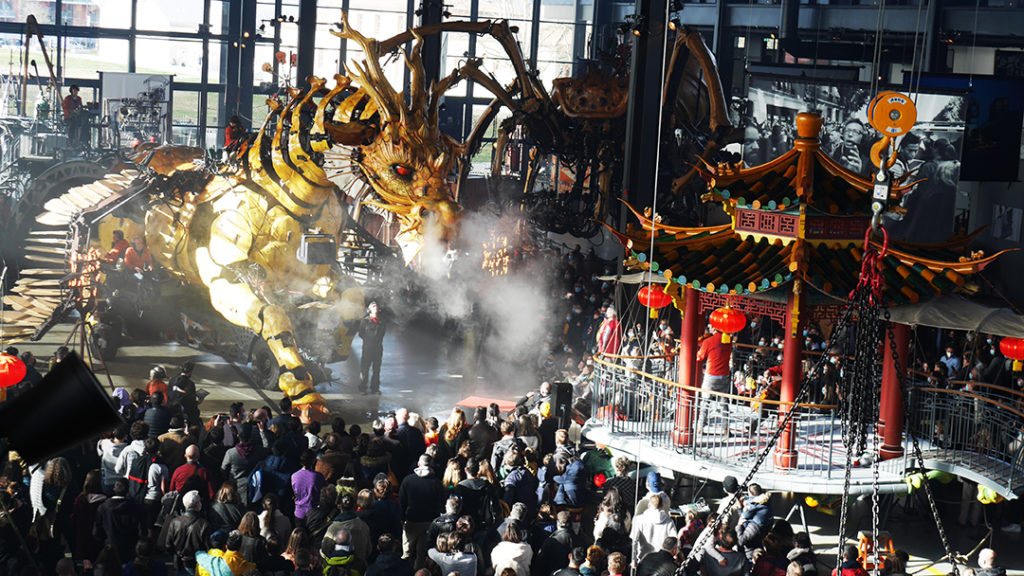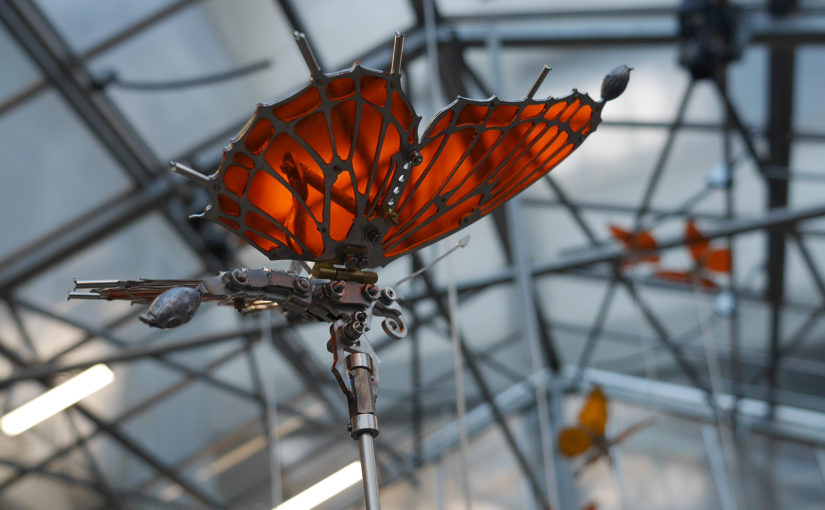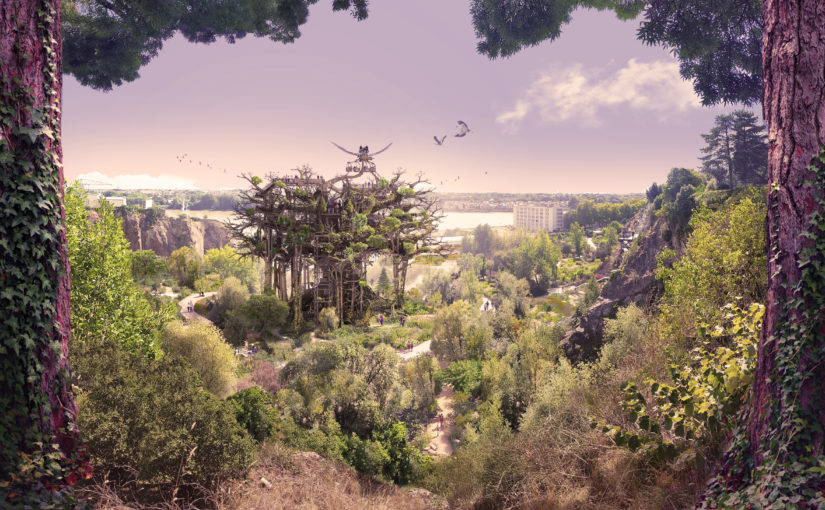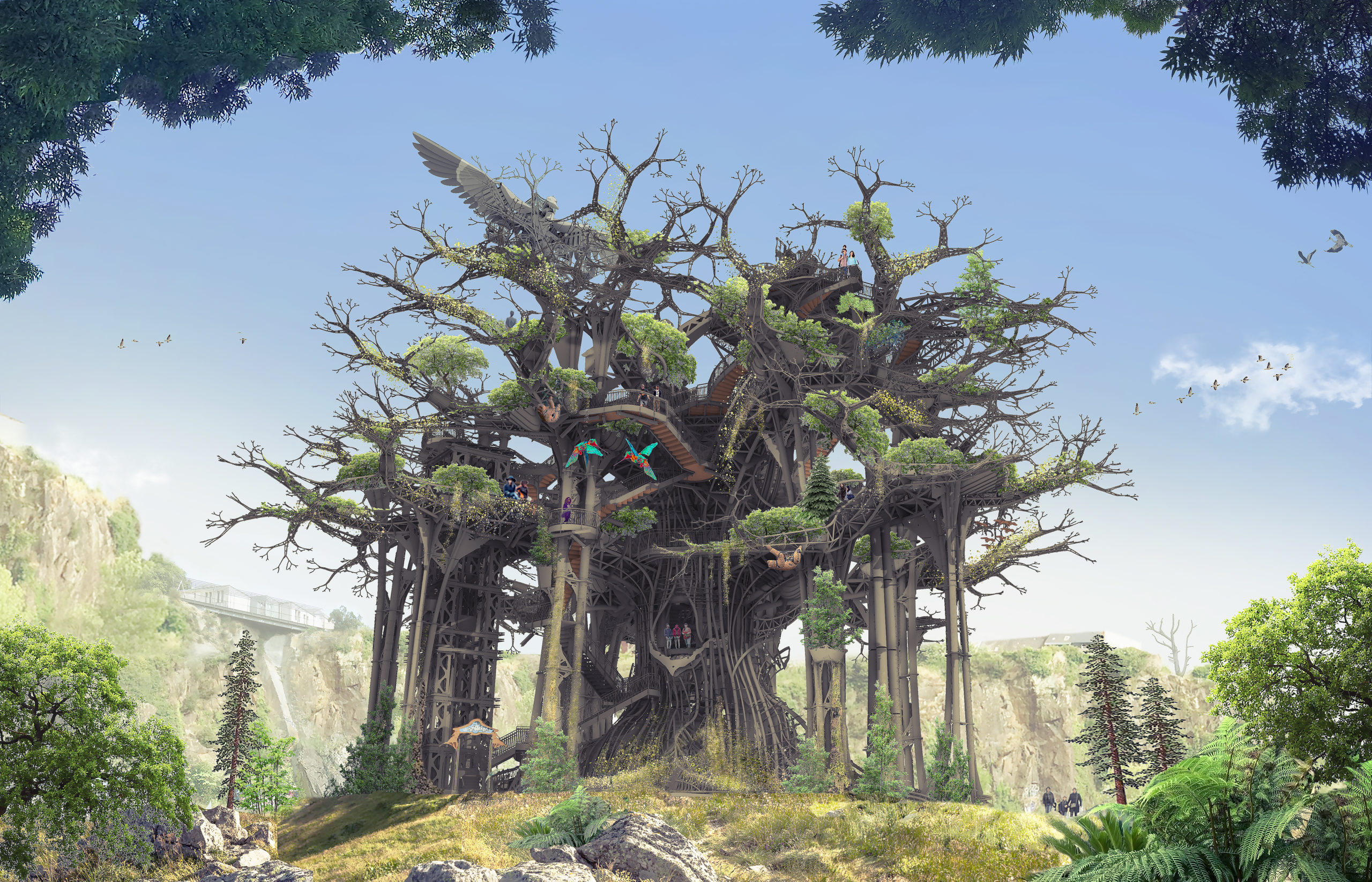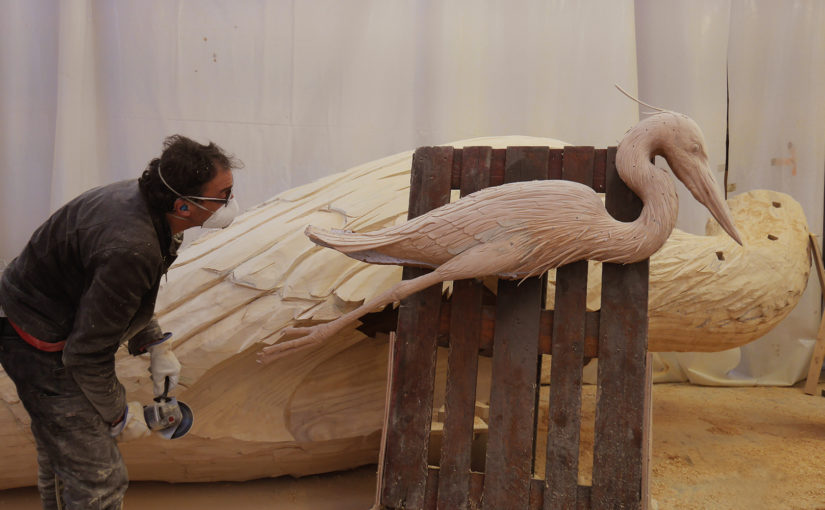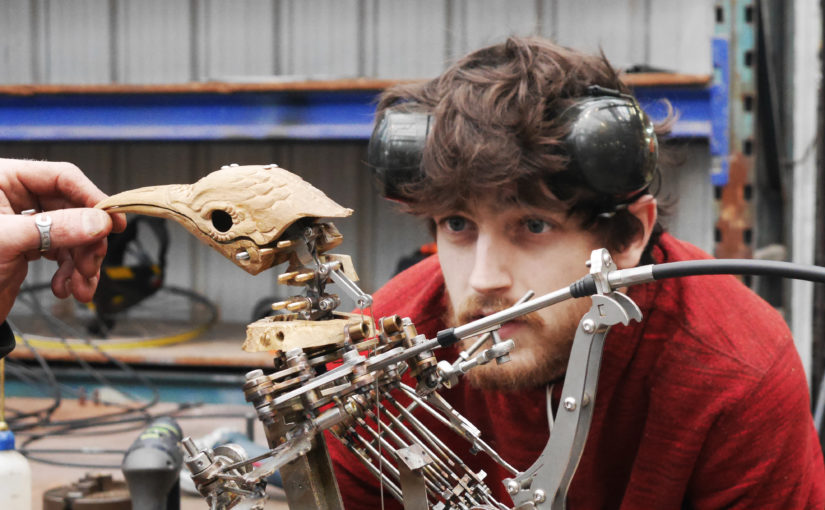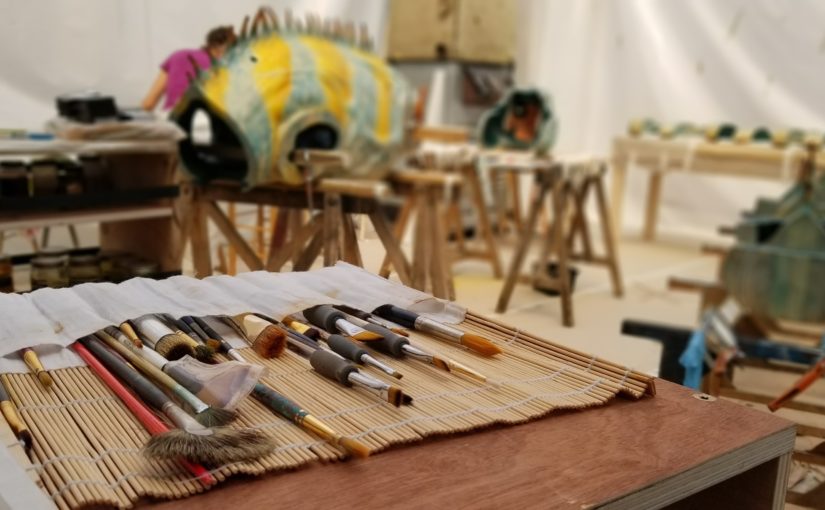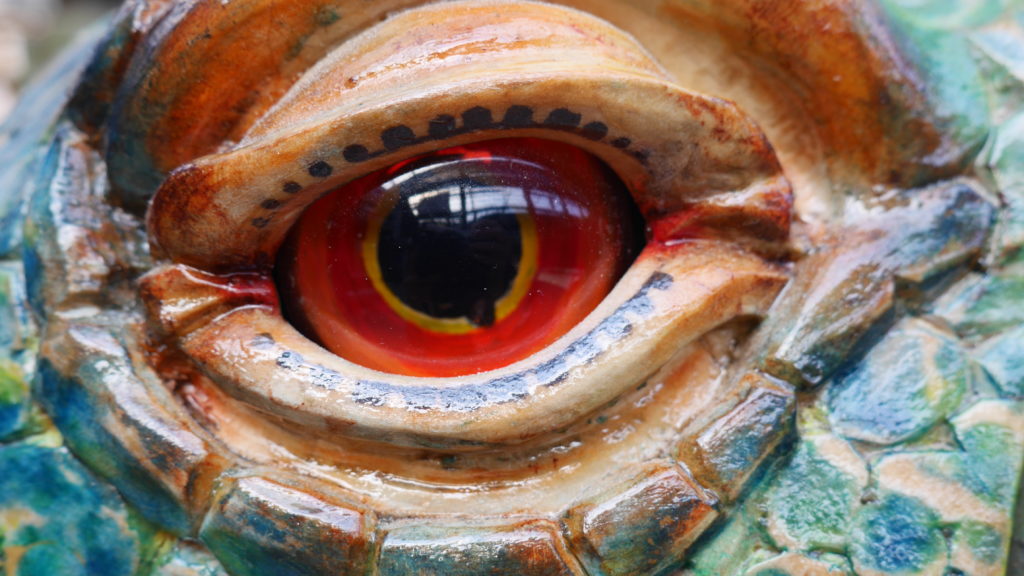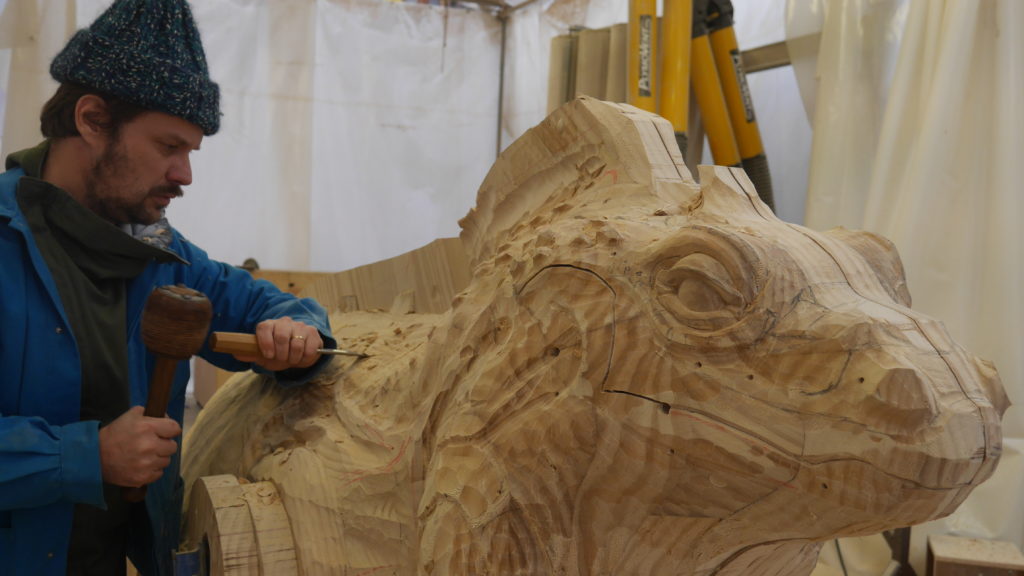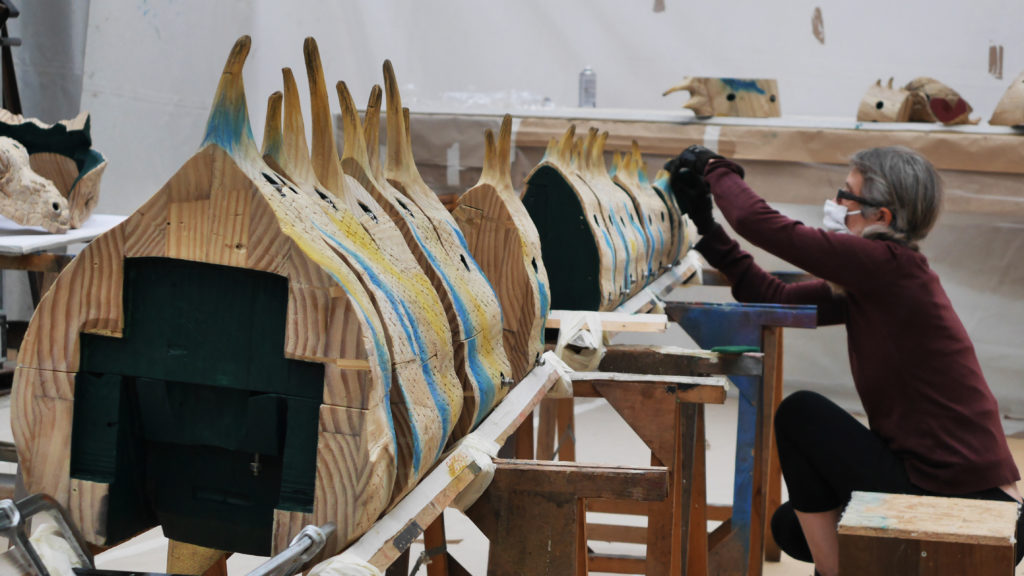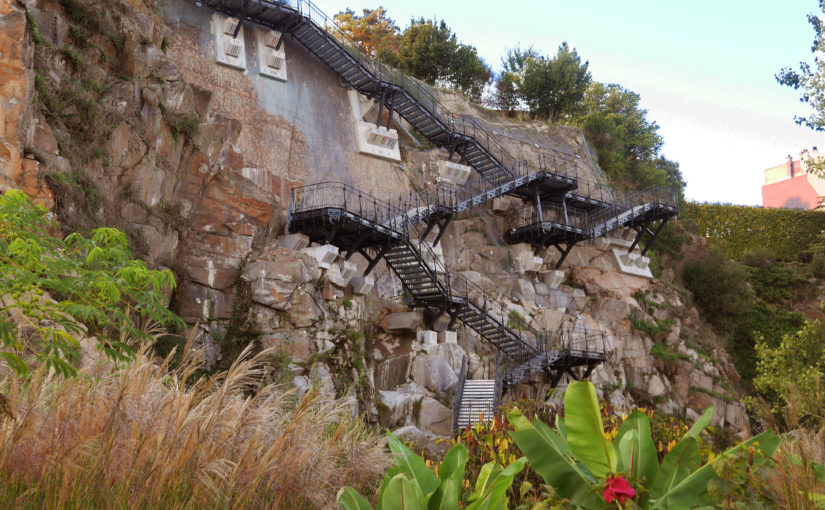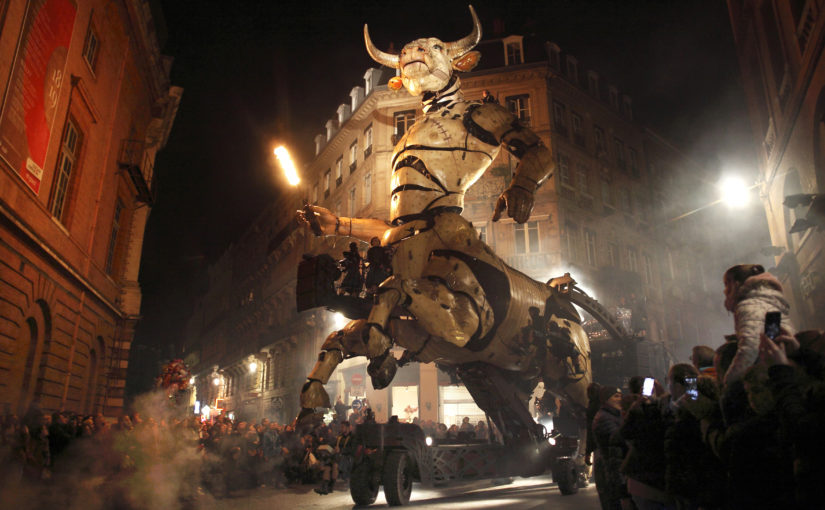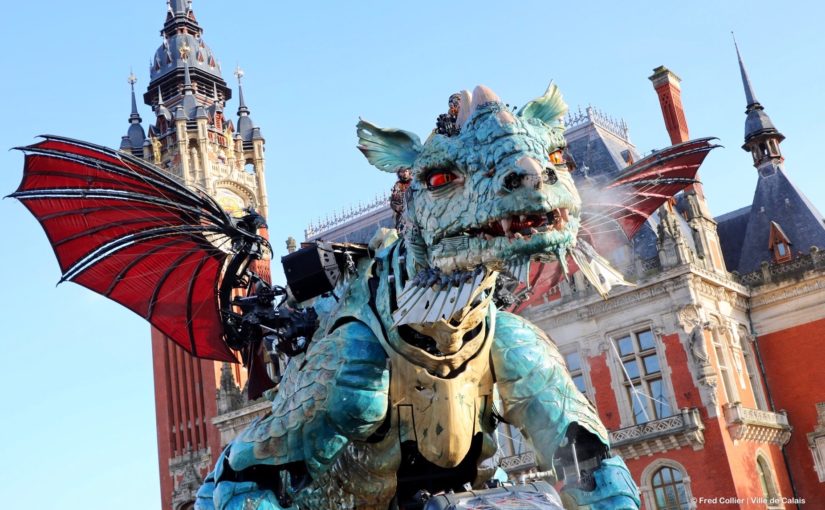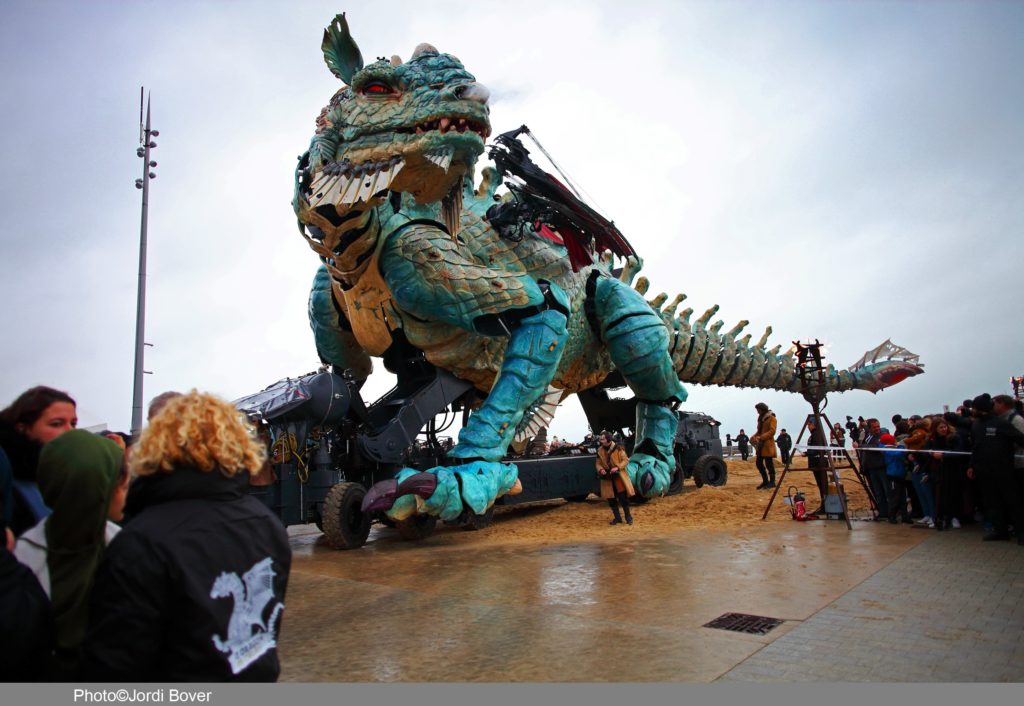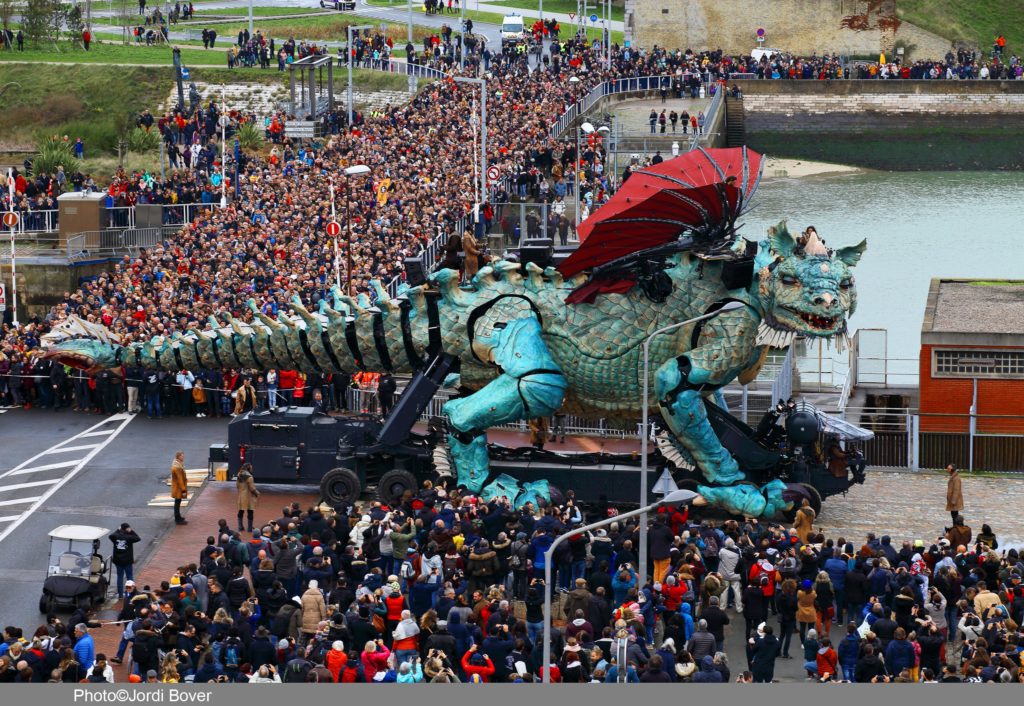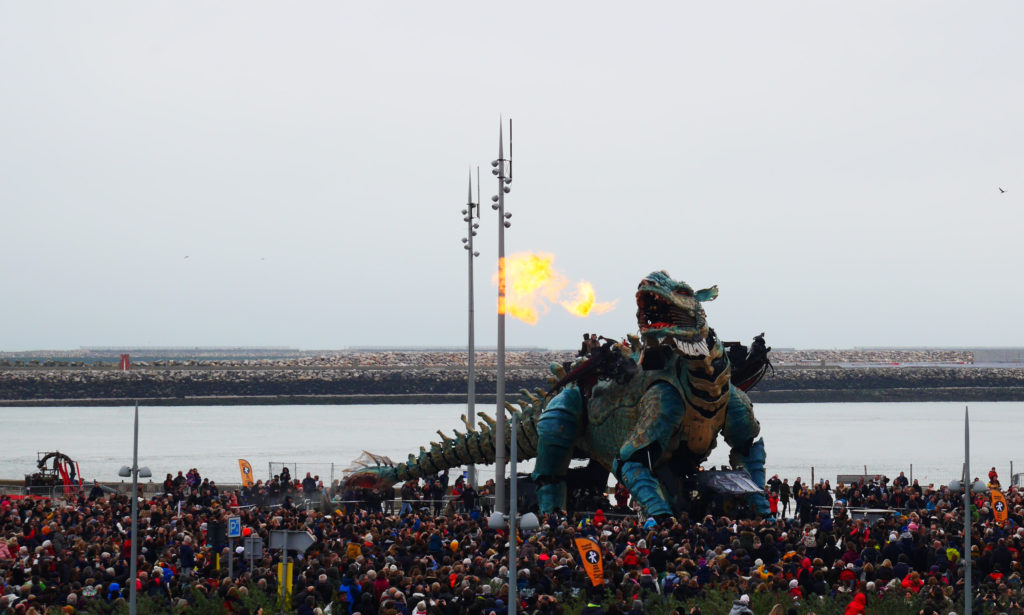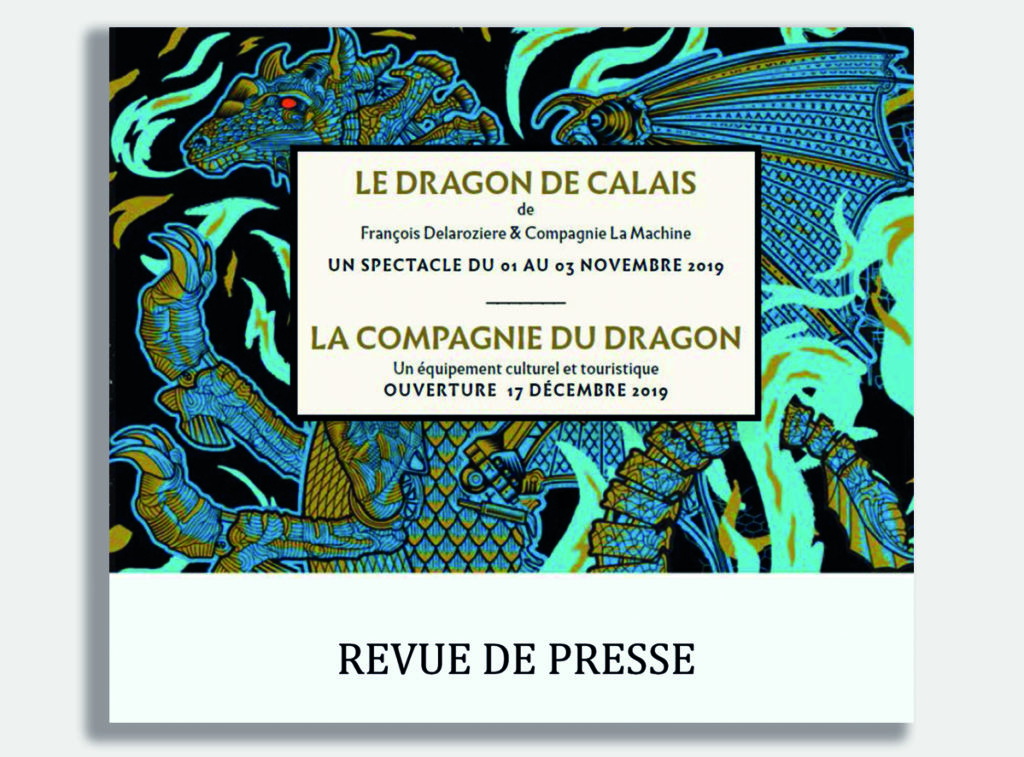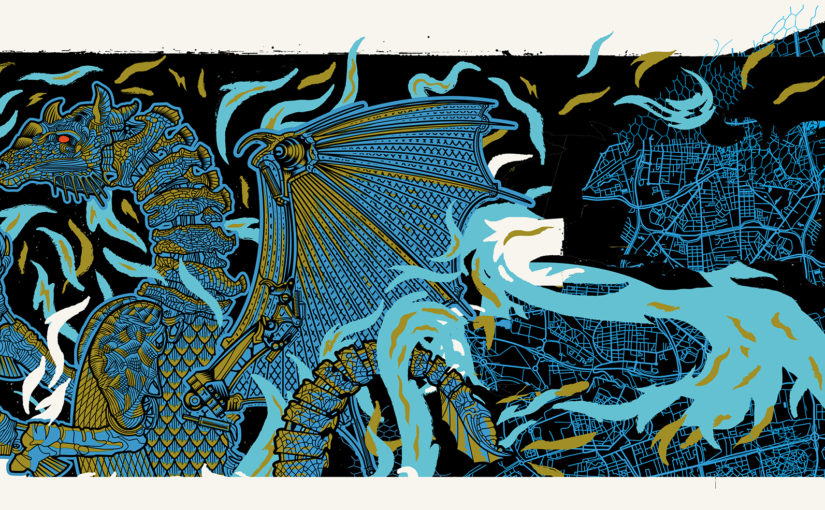Moving through the Hanging Gardens of the Heron Tree, the visitor will discover a multitude of micro landscapes, varied and unexpected plant scenes nestled in the sinuosities of the steel. It is within one of these micro landscapes that the Butterfly Swarm will take place. Inspired by the monarch butterflies of Mexico, this machine reproduces the very impressive swarms that take place during their great migration. Installed on an aquatic tank filled with reeds, papyrus or duckweed, the swarm seems to lift the machine into the air.
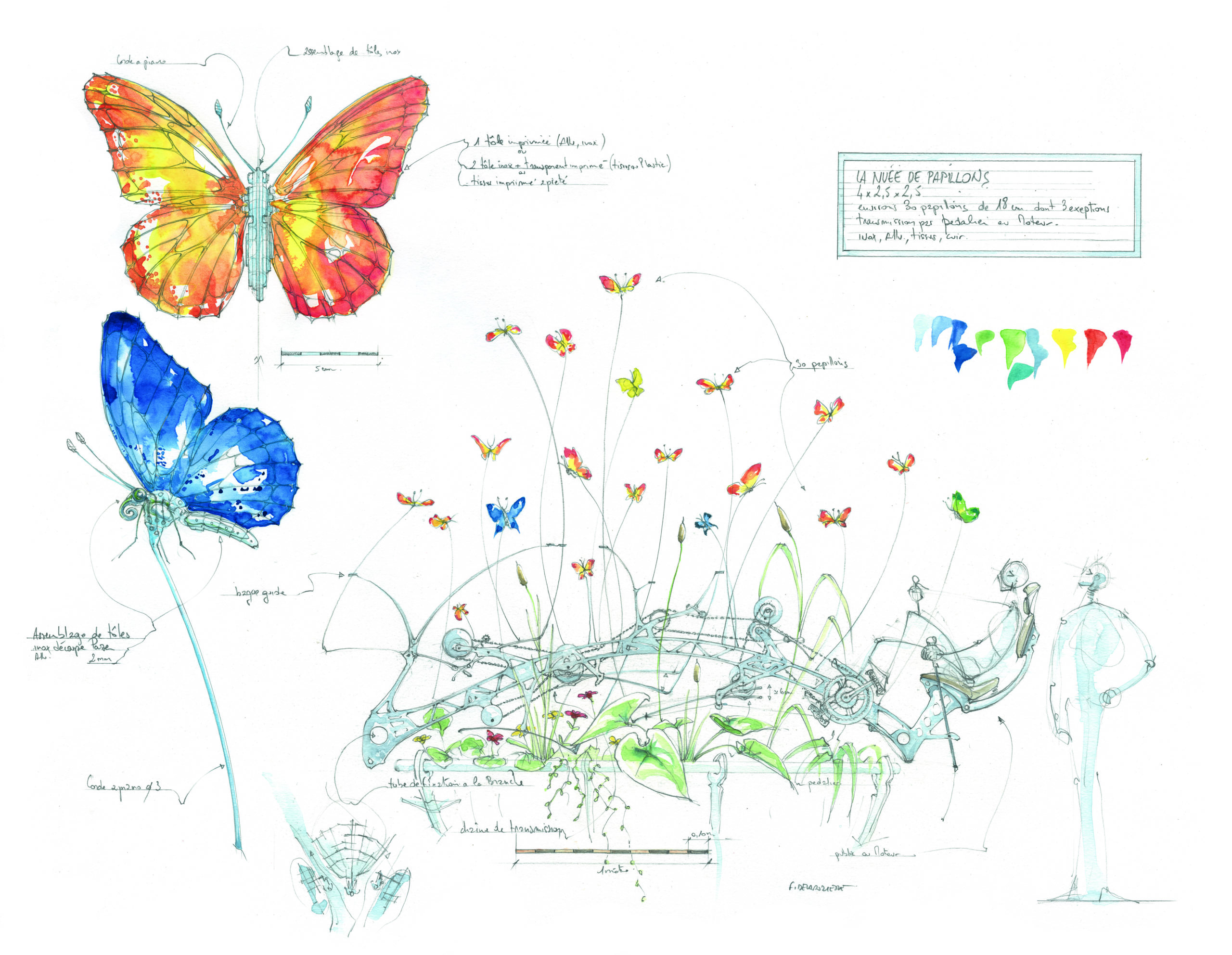
When François Delaroziere and Pierre Orefice imagined the mechanical bestiary of the Heron Tree, they very quickly wanted to include butterflies. However, as butterflies have wings that are proportionally much larger than their bodies, it is difficult to imagine this animal in fairground mode, i.e. able to carry spectators. After a period of work with Pierre Orefice, François Delaroziere designed a multitude of light and vibrant butterflies, thinking back to the solar butterflies in his childhood garden. Pierre imagined a pedal system with an onboard cyclist. The team of constructors from La Machine then entered the scene to model and formalise the sculpture using digital design tools.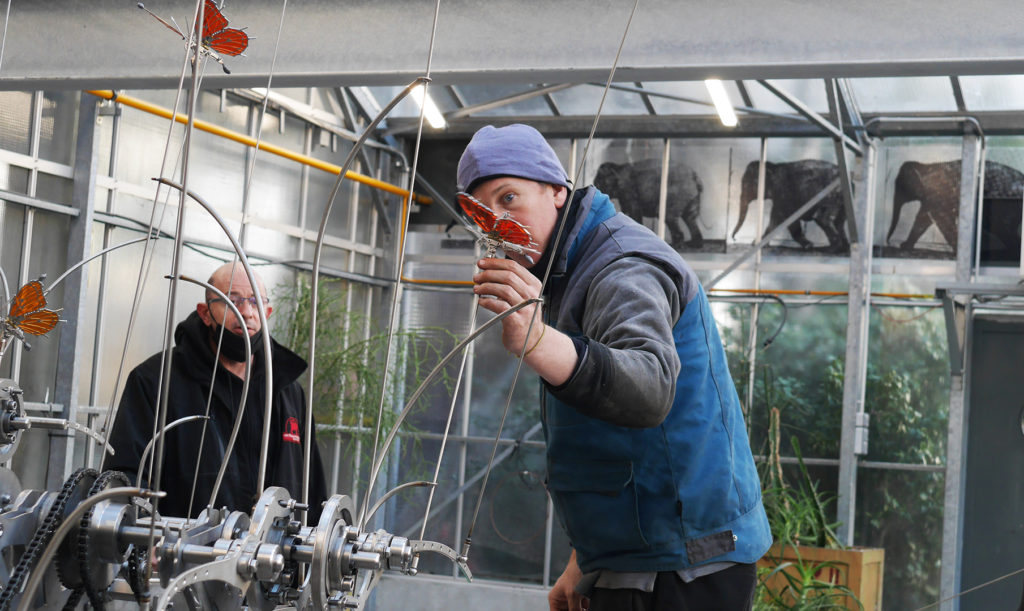
A cyclist for 35 butterflies
The Butterfly Swarm is part of the mechanical bestiary that can be manipulated by the public. It does not have an automaton or a sensor, but a simple mechanical system of chain transmission linked to a camshaft. Each butterfly is installed on a steel rod which is designed to remain flexible. To activate the machine, the visitor has to pedal to make it move. At the heart of the cloud, some butterflies are larger and of different colours. A linkage allows the butterflies to move slightly sideways. It is important to note that in nature, the butterfly’s flight may seem jerky or clumsy, but it is not! With about 10 movements per second, this insect has a rate 20 times lower than the bee. Butterflies rotate their bodies with each wing beat. This movement helps the insect to fly upwards. By adjusting the angle of their body, they can change their trajectory, moving forward rather than upwards. In addition, to breathe, butterflies have small openings on their abdomen. It is the contraction of the muscles of the abdomen and thorax that causes the wings to move. To reproduce this spontaneous wing flapping, the manufacturers placed a spring at the base of each butterfly. The vertical oscillating movement of the rod that supports it naturally causes the wings to open and close.
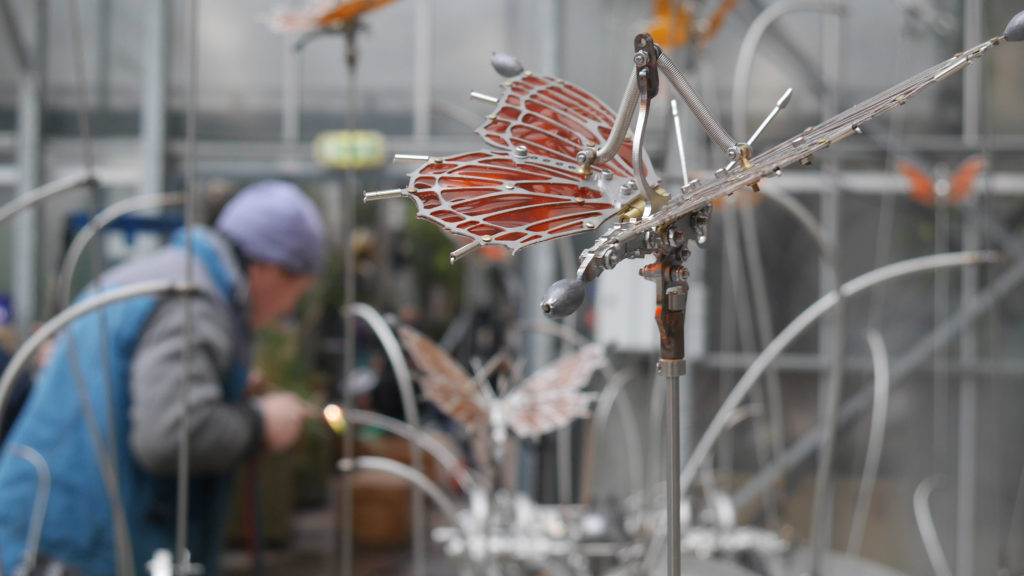
The choice of materials
Installed on a stainless steel mechanical frame that resists the vagaries of the weather, the body of the butterflies is made of aluminium plates cut with a water jet and then assembled layer by layer to create the volume. Nature offers extraordinary examples of architecture through its patterns and geometric shapes.
of extraordinary architecture. Observed with a magnifying glass, it is a formidable
inspiration. In order to reproduce the impressive network of ribs in the wings, while maintaining transparency and the play of light, the inside of the wings was made of the same material as the polyester film used for theatre projectors, so that the light can pass through.
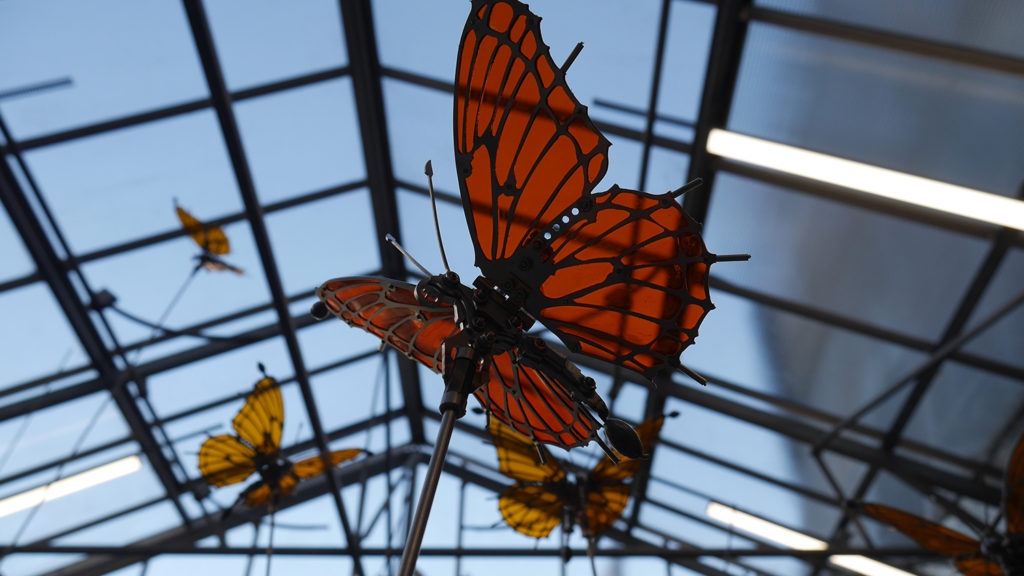
The “Nuée de papillons” will be visible and manipulable by the public in the Galerie des
Machines in Nantes from 5 February 2022. Visitors will be able to saddle up and wake up the 35 butterflies…
Attention cyclists, velocipede and lepidoptera lovers!
